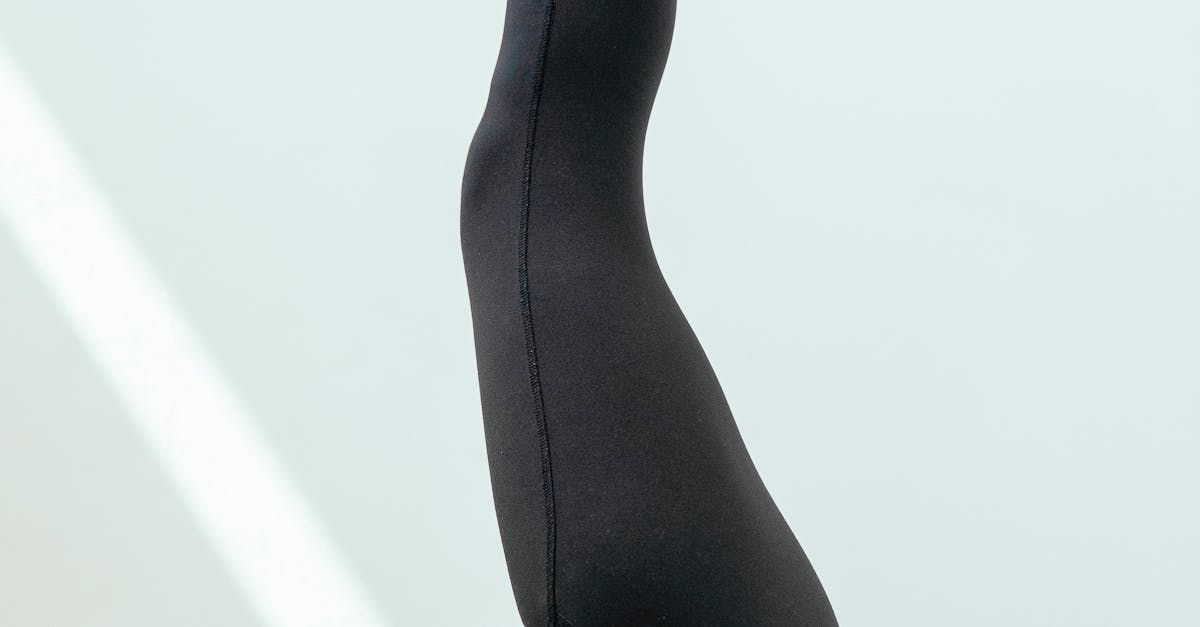Boost Flexibility: A Comprehensive Guide to Side Hip Muscle Stretches
Unlock the Secrets of Side Hip Muscle Flexibility

Boost Flexibility: A Comprehensive Guide to Side Hip Muscle Stretches
Unlock the Benefits of Side Hip Muscle Stretching
Introducing the side hip muscles, unsung heroes responsible for a wide range of movements. From walking and running to maintaining good posture, their flexibility is crucial for overall body function. This comprehensive guide empowers you with step-by-step instructions and expert tips to stretch these muscles effectively, unlocking a world of enhanced mobility, reduced pain, and improved posture. Embark on a journey towards increased flexibility, starting with your side hip muscles.
Embark on a Journey of Enhanced Flexibility
Stretching side hip muscles offers a wealth of benefits, making it an essential part of any fitness routine. Imagine moving with greater ease, experiencing reduced discomfort, and maintaining an upright posture with confidence. Side hip muscle stretching holds the key to unlocking these desirable outcomes. Whether you’re a seasoned athlete or simply seeking a more active lifestyle, incorporating these stretches into your routine is a step towards achieving your flexibility goals.
1. Introduction: Understanding Side Hip Muscles
Introduction: Understanding Side Hip Muscles
The side hip muscles, a group often overlooked, play a vital role in various movements and functions. They are primarily responsible for abducting (moving away from the midline of the body) and rotating the hip joint, allowing us to walk, run, and change direction with ease. Additionally, these muscles contribute to hip stability and proper posture.
Among the key side hip muscles are the gluteus medius and minimus, tensor fascia lata, and piriformis. The gluteus medius and minimus, located on the outer side of the hip, are responsible for abducting and rotating the hip outwards. The tensor fascia lata, found on the outer thigh, plays a role in hip abduction and stabilizing the knee joint. The piriformis, a deep muscle located near the buttocks, assists in external rotation of the hip.
Stretching the side hip muscles offers numerous benefits. It can improve range of motion in the hip joint, reducing stiffness and discomfort. Regular stretching can also help prevent muscle imbalances and injuries, contributing to overall hip health and mobility. Whether you’re an athlete seeking to enhance performance or simply seeking to maintain an active lifestyle, incorporating side hip muscle stretches into your routine is a step towards achieving your flexibility goals.
2. Step-by-Step Side Hip Stretches

Step-by-Step Side Hip Stretches
Clamshell Stretch
- Lie on your side with your knees bent and your feet together.
- Keeping your feet together, lift your top knee towards the ceiling while keeping your pelvis stable.
- Slowly lower your knee back down.
- Repeat for 10-15 repetitions on each side.
Lying Side Hip Stretch
- Lie on your side with your legs extended straight out.
- Bend your bottom knee and bring it towards your chest.
- Gently pull your bent knee towards your body until you feel a stretch in the outer hip of your top leg.
- Hold for 30 seconds and release.
- Repeat for 10-15 repetitions on each side.
Hip Abductor Stretch
- Stand with your feet shoulder-width apart.
- Step to the side with your right foot and bend your left knee slightly.
- Keeping your back straight, lean to the left until you feel a stretch in the outer hip of your right leg.
- Hold for 30 seconds and release.
- Repeat for 10-15 repetitions on each side.
Clamshell Stretch
Clamshell Stretch
The clamshell stretch is an effective exercise that targets the gluteus medius and minimus muscles, which are responsible for abducting and rotating the hip outwards. This stretch can help to improve hip mobility, reduce pain, and prevent injuries.
Instructions:
- Lie on your side with your knees bent and your feet together.
- Keeping your feet together, lift your top knee towards the ceiling while keeping your pelvis stable.
- Slowly lower your knee back down.
- Repeat for 10-15 repetitions on each side.
Tips:
- Keep your core engaged and your back straight throughout the exercise.
- Focus on squeezing your gluteus medius and minimus muscles as you lift your knee.
- Avoid arching your back or lifting your hips off the ground.
The clamshell stretch is a safe and effective exercise for most people. However, if you have any pain or discomfort in your hip, knee, or back, it is important to consult with a healthcare professional before performing this stretch.
Lying Side Hip Stretch
Lying Side Hip Stretch
The lying side hip stretch targets the tensor fascia lata (TFL) and iliotibial band (IT band), which are connective tissues that run along the outer thigh. Tightness in these tissues can contribute to hip pain and restricted movement. This stretch can help to improve hip flexibility and reduce discomfort.
Instructions:
- Lie on your side with your legs extended straight out.
- Bend your bottom knee and bring it towards your chest.
- Gently pull your bent knee towards your body until you feel a stretch in the outer hip of your top leg.
- Hold for 30 seconds and release.
- Repeat for 10-15 repetitions on each side.
Tips:
- Keep your back straight and your core engaged throughout the stretch.
- Focus on relaxing your TFL and IT band as you pull your knee towards your body.
- Avoid overstretching and listen to your body.
The lying side hip stretch is a safe and effective stretch for most people. However, if you have any pain or discomfort in your hip, knee, or back, it is important to consult with a healthcare professional before performing this stretch.
Hip Abductor Stretch
Hip Abductor Stretch
The hip abductor stretch targets the gluteus medius and maximus muscles, which are responsible for abducting (moving away from the midline of the body) and rotating the hip outwards. This stretch can help to improve hip mobility, reduce pain, and prevent injuries.
Instructions:
- Stand with your feet shoulder-width apart.
- Step to the side with your right foot and bend your left knee slightly.
- Keeping your back straight, lean to the left until you feel a stretch in the outer hip of your right leg.
- Hold for 30 seconds and release.
- Repeat for 10-15 repetitions on each side.
Tips:
- Keep your core engaged and your back straight throughout the stretch.
- Focus on squeezing your gluteus medius and maximus muscles as you lean to the side.
- Avoid arching your back or bending your torso forward.
The hip abductor stretch is a safe and effective stretch for most people. However, if you have any pain or discomfort in your hip, knee, or back, it is important to consult with a healthcare professional before performing this stretch.
3. Benefits of Side Hip Muscle Stretching
Benefits of Side Hip Muscle Stretching
Stretching the side hip muscles offers a range of benefits that contribute to overall physical well-being and performance:
Improved Range of Motion
Regularly stretching the side hip muscles can enhance flexibility and increase the range of motion in the hip joint. This improved flexibility allows for greater mobility in activities such as walking, running, and changing direction. It can also reduce the risk of injuries by preparing the muscles for movement.
Reduced Pain
Tightness in the side hip muscles can lead to pain and discomfort in the hip, knee, and lower back. Stretching these muscles can help to alleviate tension and reduce pain by promoting blood flow and improving muscle function.
Enhanced Posture
Strong and flexible side hip muscles play a crucial role in maintaining good posture. They help to stabilize the pelvis and spine, reducing the risk of imbalances and misalignments. Improved posture can lead to reduced back pain, better balance, and increased confidence.
Improved Range of Motion
Improved Range of Motion
Stretching the side hip muscles can significantly improve flexibility and increase the range of motion in the hip joint. When these muscles are tight and inflexible, they can restrict movement and make it difficult to perform everyday activities or participate in sports. Regular stretching helps to lengthen and loosen the muscles, allowing for greater mobility and a wider range of motion.
For example, improved flexibility in the side hip muscles can enhance performance in activities such as walking, running, and changing direction. It can also reduce the risk of injuries by ensuring that the muscles are prepared for movement and less likely to be strained or torn. Additionally, increased range of motion in the hip joint can improve balance and coordination, contributing to overall physical fitness and well-being.
Reduced Pain
Reduced Pain
Tightness and discomfort in the side hip muscles can often lead to pain and stiffness in the hip, knee, and lower back. Stretching these muscles can help to alleviate pain by promoting blood flow, reducing tension, and improving muscle function.
Regular stretching of the side hip muscles can help to elongate and loosen the muscles, reducing tightness and discomfort. This can be especially beneficial for people who sit for long periods of time or engage in activities that involve repetitive hip movements. Stretching can also help to improve circulation, bringing more oxygen and nutrients to the muscles, which can aid in reducing pain and promoting healing.
Furthermore, stretching the side hip muscles can help to improve the overall biomechanics of the body. When these muscles are flexible and functioning properly, they can better support the pelvis and spine, reducing the risk of pain and discomfort in these areas.
Enhanced Posture
Enhanced Posture
Strong and flexible side hip muscles play a vital role in maintaining good posture. They help to stabilize the pelvis and spine, reducing the risk of imbalances and misalignments. Improved posture can lead to reduced back pain, better balance, and increased confidence.
When the side hip muscles are weak or tight, they can pull the pelvis out of alignment, leading to imbalances in the spine and other parts of the body. This can result in poor posture, back pain, and other musculoskeletal problems. Stretching these muscles can help to correct these imbalances and restore proper alignment, promoting good posture.
Additionally, strong side hip muscles help to support the spine and pelvis, reducing the strain on these structures. This can help to prevent back pain and other postural problems, and can also improve balance and coordination. Good posture is essential for overall health and well-being, and stretching the side hip muscles is an effective way to achieve and maintain it.
4. Tips for Effective Side Hip Muscle Stretching

Tips for Effective Side Hip Muscle Stretching
To maximize the effectiveness of side hip muscle stretches, it is important to follow proper form, hold the stretches for an appropriate amount of time, and stretch regularly.
Proper Form
When performing side hip muscle stretches, it is important to maintain proper body alignment and avoid overstretching. Always consult with a healthcare professional or certified personal trainer for guidance on proper stretching techniques.
Holding Times
For optimal results, hold each stretch for at least 30 seconds. Gradually increase the hold time as you become more flexible. Holding the stretches for an adequate duration allows the muscles to relax and lengthen effectively.
Frequency
Incorporate side hip muscle stretches into your routine 2-3 times per week. Regular stretching helps to maintain flexibility and prevent muscle tightness. Consistency is key to achieving and maintaining the desired results.
Proper Form
Proper Form
Maintaining correct body alignment and avoiding overstretching are crucial for effective side hip muscle stretching. Proper form ensures that the target muscles are engaged correctly and that you minimize the risk of injury.
When performing side hip stretches, pay attention to the following:
- Keep your back straight and your core engaged throughout the stretch.
- Avoid arching your back or bending your torso forward.
- Focus on stretching the side hip muscles, not the lower back.
- Only stretch to the point of mild discomfort. Avoid overstretching, which can lead to muscle tears or strains.
- Breathe deeply and relax into the stretch. Hold each stretch for at least 30 seconds.
If you experience any pain or discomfort during a stretch, stop and consult with a healthcare professional.
Holding Times
Holding Times
Holding each side hip stretch for an appropriate amount of time is essential for achieving optimal results. Holding the stretches for too short a duration may not allow the muscles to fully relax and lengthen, while holding them for too long can lead to overstretching and potential injury.
To maximize the effectiveness of your side hip muscle stretches, aim to hold each stretch for at least 30 seconds. This duration allows the muscles to gradually lengthen and release tension. If you are new to stretching, you may start with shorter hold times and gradually increase them as you become more flexible.
Once you are comfortable holding each stretch for 30 seconds, you can further challenge yourself by progressively increasing the hold time. Listen to your body and avoid overstretching. If you experience any pain or discomfort, stop stretching and consult with a healthcare professional.
Frequency
Frequency
Stretching the side hip muscles 2-3 times per week is generally recommended for best results. This frequency allows for consistent improvement in flexibility without overworking the muscles. Incorporating side hip muscle stretches into your regular fitness routine or as part of a warm-up or cool-down can help you maintain optimal hip mobility and range of motion.
If you are new to stretching, starting with 1-2 sessions per week and gradually increasing the frequency as you become more comfortable is advisable. It is essential to listen to your body and avoid overstretching. If you experience any pain or discomfort during or after stretching, stop and consult with a healthcare professional.
Regular stretching, combined with other exercises that strengthen the hip muscles, can significantly improve your overall hip health and function. Make side hip muscle stretching a part of your regular routine to reap the benefits of enhanced flexibility, reduced pain, and improved posture.
5. Conclusion: Importance of Side Hip Muscle Stretching
Conclusion: Importance of Side Hip Muscle Stretching
Stretching the side hip muscles is often overlooked but plays a vital role in overall physical well-being and mobility. Incorporating regular side hip muscle stretches into your routine can provide numerous benefits, including improved range of motion, reduced pain, and enhanced posture.
By improving flexibility in the side hip muscles, you can increase your mobility and make everyday activities and exercises easier and more enjoyable. Stretching these muscles can also help alleviate pain and discomfort caused by tightness and tension, promoting overall hip health and function.
Furthermore, strong and flexible side hip muscles contribute to good posture by stabilizing the pelvis and spine. This can reduce the risk of back pain and other musculoskeletal problems and promote a more confident and balanced posture.
Call to Action
Call to Action
Unlock the benefits of side hip muscle stretching by incorporating them into your regular routine. Whether you’re an athlete looking to enhance performance or simply seeking to improve your overall well-being, stretching these muscles is a simple and effective way to achieve your goals.
Start by setting aside a few minutes each day or a few times per week for side hip muscle stretches. Gradually increase the duration and frequency of your stretches as you become more flexible. Remember to listen to your body and avoid overstretching, and always consult with a healthcare professional if you have any concerns.
By making side hip muscle stretching a part of your routine, you can experience the positive impact on your mobility, flexibility, and overall physical well-being. Embrace the benefits of side hip muscle stretching today and unlock a world of enhanced movement and comfort.
External Resources
External Resources
For further information and professional guidance on side hip muscle stretching, consider the following reputable sources:
- National Academy of Sports Medicine (NASM): https://blog.nasm.org/fitness/side-hip-stretches
- American Council on Exercise (ACE): https://www.acefitness.org/resources/everyone/blog/4-hip-flexor-stretches-you-should-be-doing/
- Mayo Clinic: https://www.mayoclinic.org/diseases-conditions/hamstring-injury/in-depth/hip-flexor-stretch/art-20046851
These resources provide detailed instructions, videos, and professional insights to help you safely and effectively stretch your side hip muscles. Consulting with a healthcare professional or certified personal trainer can also be beneficial for personalized guidance and to address any specific concerns you may have.
Quiz: Test Your Understanding
- Which of the following is NOT a benefit of side hip muscle stretching?
- a) Improved range of motion
- b) Reduced pain
- c) Enhanced posture
- d) Increased muscle mass
-
True or False: Holding side hip stretches for less than 30 seconds is sufficient to achieve optimal results.
-
How often is it recommended to stretch side hip muscles for best results?
- a) Once a week
- b) 2-3 times per week
- c) Every day
- d) As often as possible
Answer Key
- d
- False
- b
Answer Key
- d
- False
- b
